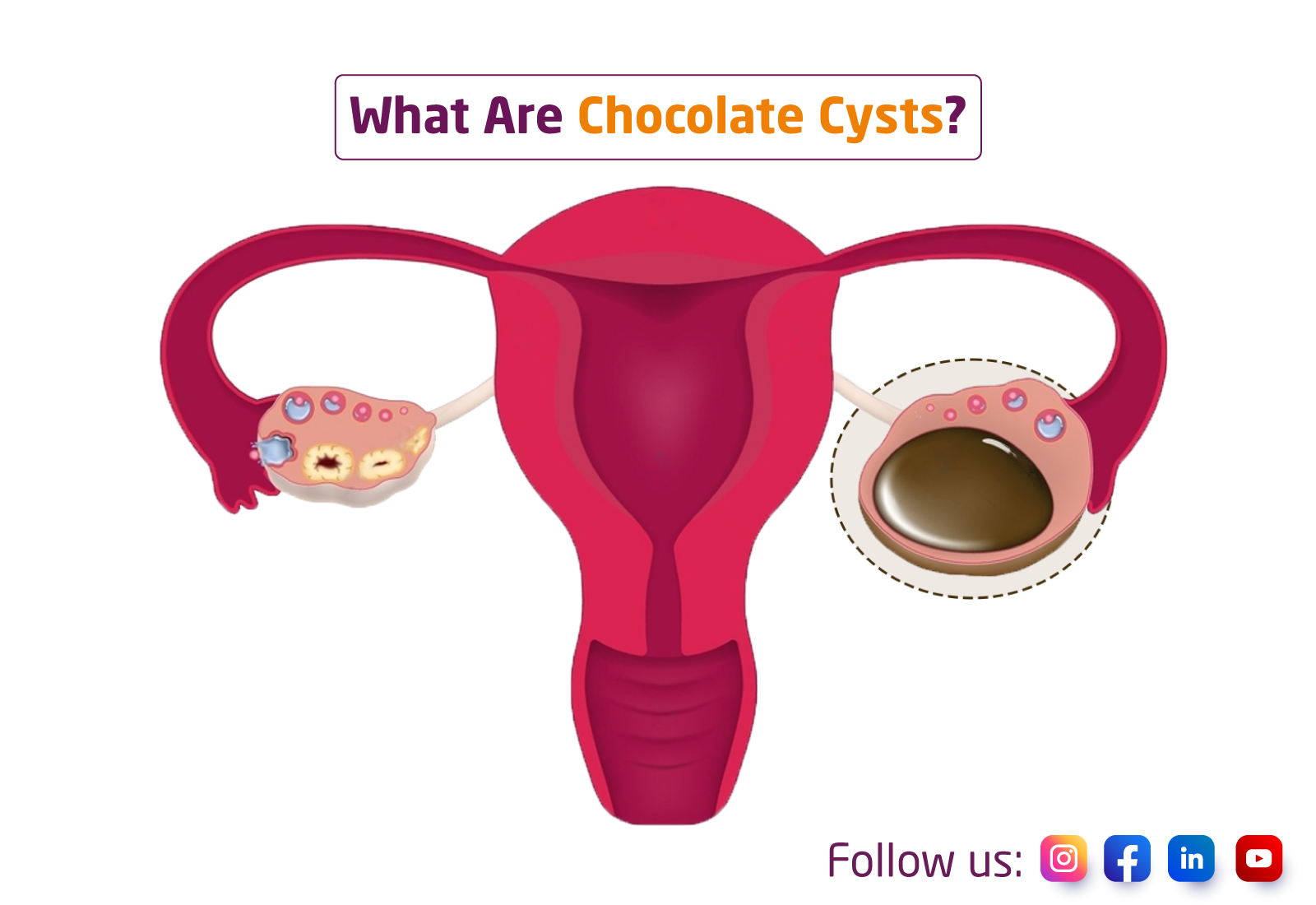Ovarian Endometriomas: What are Chocolate Cysts?
“chocolate cyst,” also known as ovarian endometriomas, are cysts that contain menstrual blood. They are a sign of endometriosis, a disorder in which endometrium (cells from the lining of the uterus) spreads outside the uterus. Your doctor can assist you in managing any uncomfortable symptoms that these cysts may cause. Sometimes getting rid of them is the best course of action.
Must Read: The Vital Role of Psychological Support in the IVF Journey
What are the symptoms of Chocolate Cysts?
Some women may experience symptoms from chocolate cysts. Other ladies might not have any symptoms at all.
Moreover, the existence or intensity of symptoms is not always related to the cyst’s size. In other words, a woman with a little cyst might have symptoms, whereas a woman with a huge cyst might not. Cysts can be anywhere in size between 2 and 20 centimetres (cm).
The symptoms may consist of:
- painful periods
- pelvic pain
- irregular periods
- pain during intercourse
- Feeling the urge to pee more.
- Back pain.
- Vomiting.
- Bloating.
- Nausea.
- infertility
What causes chocolate cysts?
Endometriosis and ovarian endometriomas have unknown exact causes, according to doctors. The most prevalent explanation contends that endometriosis arises from the backflow of some endometrial tissue during menstruation from the uterus (retrograde menstruation). Some of the tissue makes its way back into your ovaries through your fallopian tubes rather than exiting your body through your vagina.
When your body releases the hormones that cause your uterine lining to bleed during each menstrual cycle, the abnormal tissue bleeds as well. It starts to swell up. Menstrual blood and the swollen tissue around it have the potential to develop into an ovarian endometrioma over time.
What effect do chocolate cysts have on fertility?
Chocolate cyst can penetrate, harm, and overtake healthy ovarian tissue. This may seriously threaten fertility. These cysts can be challenging to treat, and the pelvic treatments required to manage or remove them can impair fertility and leave ovarian tissue scarring.
Compared to women without chocolate cyst, these are the following problems women with chocolate cysts face:
- Fewer eggs.
- Eggs that are less likely to mature result in decreased fertilization rate
- Higher chances of unruptured follicle leading to anovulation
- The thickened outer shell of the eggs may impair fertilisation
- Higher follicle-stimulating hormone (FSH) levels may be a sign of ovarian issues.
Even while chocolate cyst harm ovaries, many women who have them can get pregnant naturally. If you struggle to get pregnant and have chocolate cyst, in vitro fertilisation (IVF) is an additional alternative.
How are chocolate cyst diagnosed?
Physical examinations and imaging tests can reveal signs of ovarian endometrioma. Your healthcare provider might find the cyst during a pelvic exam if it is particularly large. Your doctor can find out if you have a mass thanks to transvaginal ultrasounds, MRIs, and computed tomography scans (CT scans).
Laparoscopy is the gold standard for diagnosing endometriosis. Your doctor will do this procedure by making very small slits in your belly and inserting a laparoscope, which is a thin tube. Your doctor will be able to see the cyst through this tube and either completely remove it or extract a sample for testing (biopsy). Your doctor will identify endometrial glands and stroma cells in the sample if it is an ovarian endometrioma. Laparoscopy allows for simultaneous diagnosis and treatment. However, surgery for the removal of ovarian endometrioma is done according to symptoms. If a patient is having severe pain not responding to medicine and have completed the family then endometrioma can be removed as its removal will also result in damaging the surrounding healthy ovarian tissue leading to decreased ovarian reserve. That is why in patients with infertility with low ovarian reserve, removal of endometrioma if required, is preferably done after freezing of embryos.
Takeaway
Women with endometriosis frequently have chocolate cysts. Medication can frequently be used to treat symptoms. The cysts may need to be removed in some circumstances.
Unpleasant symptoms from ovarian endometriomas can interfere with your life. If you’re still in your reproductive years, it’s not particularly consoling to know that these symptoms typically improve after menopause. Ask your doctor about your treatment choices if you have an ovarian endometrioma. Based on your health and way of living, your doctor may suggest methods for treating your problems.

